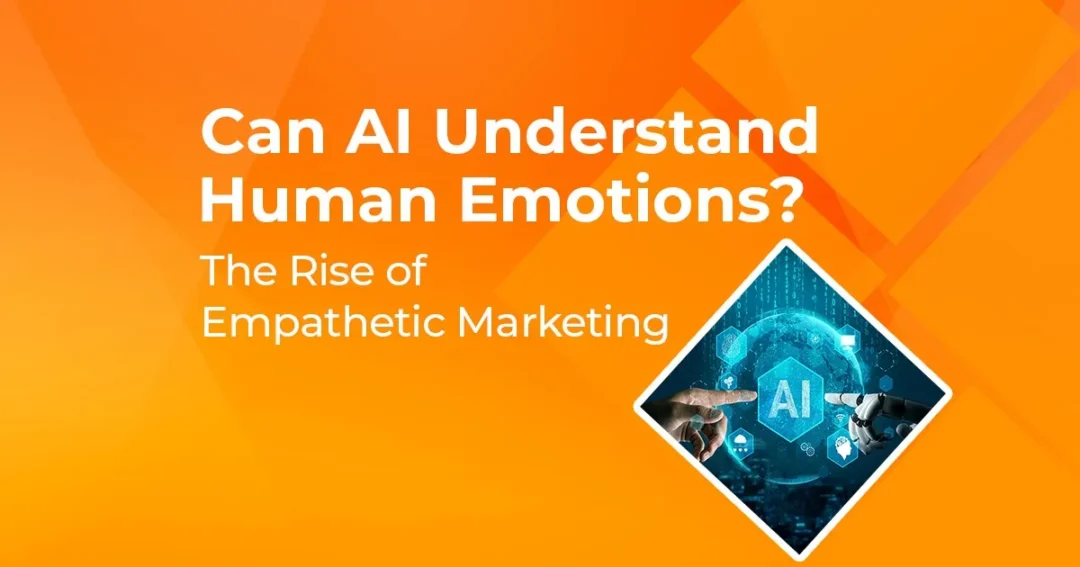Our world is running on algorithms backed by data. This means a lot of machines and automated tools. This change raises a fascinating question: Can machines truly ‘feel’? As artificial intelligence (AI) continues to evolve rapidly, its understanding of human emotion is not far from reality. Companies are heavily invested in using AI in emotional marketing as it will forever change the marketing domain. So, let’s take a deeper look at the topic of – ‘Can AI understand emotions?’
The Role of Empathy in Digital Marketing
Brands are intensely focused on creating an emotional connection with their audience as this secures their chance to have loyal customers instead of being random product sellers. It makes the transactional relation an emotional one. At the core of understanding human emotions lies empathy. It builds trust, fosters advocacy, and creates a lasting relationship when used strategically. In the age of digital marketing, this empathy-driven approach with AI has become the top priority in creating a customer experience that resonates.
What is Emotional AI?
Emotional AI is a specialised branch of artificial intelligence designed to detect, analyse, interpret, and sometimes respond to human emotions. The AI emotional intelligence can leverage a range of techniques:
- Sentiment Analysis: Analysing text data from various platforms and sources like social media posts, reviews, emails, and other interactions to determine the underlying sentiment. For example, Amazon reviews give a consolidated AI-generated review at the very top to highlight the positive and negative sentiments shared by the buyers.
- Facial Recognition: Interpreting all facial moments and what emotions they align with from video feeds to infer the user’s emotional state. Virtual try-on apps also often track customer reactions to understand how a product has been reacted to.
- Tone and Voice Detection: Evaluating pitch, words, and intonation of the speaker’s voice to identify emotions such as anger, hurt, confusion, etc. Currently, Klingel uses voice-based emotion detection to personalise customer product recommendations during live shopping.
Can AI Truly Understand Human Emotions?
- Current Capabilities of Emotional AI: At present, pattern recognition is AI’s strongest suit. It can learn that certain vocal tones or facial expressions are often associated with specific human-labeled emotions, and this can be more accurate with larger datasets.
- Limitations Faced by Emotional AI: AI cannot feel, experience, or be programmed for genuine human empathy. Human emotions are heavily influenced by context, culture, and individual history instead of just facts, making them unsuitable for even the most advanced algorithms.
Benefits of Empathetic AI in Marketing
- Personalisation: Moving beyond generic segmentations, empathetic AI personalises user experience by tailoring messages, offers, and experiences based on individual preferences.
- Customer Service: Addressing customer frustrations in a timely fashion has become easier, leading to positive word-of-mouth for brands’ services and garnering repeat business using AI for customer experience.
- Improved Sales Conversions: Understanding customer hesitations and interest allows AI algorithms to deliver the right message at the right moment when the customer is most receptive.
Conclusion
While the debate about whether Emotional AI can feel will continue for quite a while, its ability to detect, interpret, and respond to human emotional cues is undeniable. For brands, navigating this frontier is necessary to enhance personalisation and efficiency without losing sight of the human touch connection.
The future is one where algorithms are infused with the human heart instead of just being smart.


